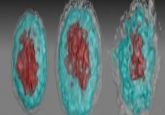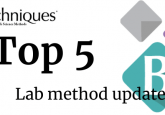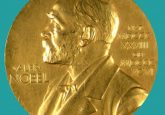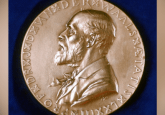Who won the 2023 Nobel Prize in Physiology or Medicine?
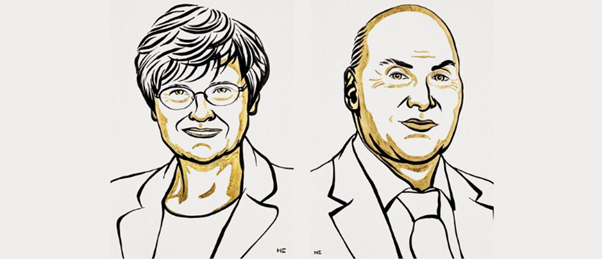
The Nobel Prize for Physiology or Medicine has been awarded to Katalin Karikó (Szeged University, Hungary) and Drew Weissman (University of Pennsylvania, PA, USA) for their foundational work in mRNA vaccines, which enabled the rapid development of the COVID-19 vaccines. Their discovery of the importance of nucleoside base modification in the immune acceptance and subsequent translation of synthetic mRNA, opened the gateway for a series of dramatic developments in vaccinology.
A brief history of vaccines
Vaccinology has a long and storied history, dating back to the inoculation of James Phipps with material from a cowpox sore by Edward Jenner to successfully protect him from smallpox in 1796. While this experiment gave the field its name, theories and practices focused on infection with one disease to protect from another have existed for far longer, with some sources suggesting that they took place as early as the B.C. era.
For a long time, the principle underlying vaccines remained largely unchanged, relying on dead or disabled pathogens to stimulate an immune response from which the patient acquired a lasting immunity. This continued until it was identified that the delivery of a single protein component of a pathogen could effectively stimulate an immune response and be used as the basis for a vaccine, as exemplified by the hepatitis B vaccine.
The next step for vaccinology was conceptualized as the delivery of genetic information that encoded for viral surface proteins, encased in a harmless viral envelope, into the patient’s cells. This approach would leverage the cell’s protein-producing machinery to express the antigens themselves and stimulate an immune response.
DNA was chiefly the genetic language selected for early investigations into this approach due to its favorable stability compared to RNA. However, candidates relying on DNA did not translate positive results from animal models into humans, likely due to the need for it to be delivered through the cell wall and into the nucleus for it to be effective. Furthermore, this approach gives rise to safety concerns surrounding the potential integration of viral DNA into the recipient’s genome.
 Scientists just want to have fun: the 33rd First Annual Ig Nobel Prizes
Scientists just want to have fun: the 33rd First Annual Ig Nobel Prizes
This year’s Ig Nobel Prize ceremony was packed with educational entertainment, which was truly hilarious.
Managing mRNA and a meeting of minds
Approaches using mRNA had been touted since the development of in vitro transcription in the 1980s, which enabled the production of synthetic mRNA without the need for cell culture. This development constituted a significant saving in the time and resources needed to produce a vaccine, as it bypassed the need for cell culture. However, initial studies of these mRNA-based vaccines revealed that they led to significant inflammation and poor rates of translation once transfected into cells.
Undeterred by the poor stability and inflammatory side effects of mRNA, Karikó continued to believe in the therapeutic promise of mRNA, persevering in her research into these molecules despite prevailing opinions at the time making the acquisition of funding highly challenging. During this period in the early 1990s, she met Weissman, an expert on dendritic cells – key cells of the immune system that are involved in vaccine-induced immune responses. Together they set out to investigate how different types of RNA interact with immune cells.
During their investigations, the pair identified that in vitro transcribed RNA stimulated the release of inflammatory signals from dendritic cells, which recognized the material as foreign. However, mammalian-derived RNA did not trigger the same response, prompting them to consider the differences between these types of RNA.
Karikó and Weissman realized that perhaps the in vitro transcribed RNA was too perfect, too synthetic and lacked the frequent chemical modifications that litter mammalian RNA transcribed in vivo. To confirm this hypothesis, they synthesized RNA with the chemically altered bases observed in nature, such as pseudouridine and N6-methyladenosine, and added them to dendritic cells.
The change observed was stark: inflammatory responses were significantly dampened, with different combinations of base modifications enabling the RNA to escape detection by the various receptors of dendritic cells. However, only modifications of the uridine bases led to the total avoidance of an inflammatory response from dendritic cells. Taken by the potential therapeutic impact of these findings, Karikó and Weissman published them in a paper in 2005.
Further investigations, accompanied by papers published in 2008 and 2010, identified that using modified mRNA also leads to a significant improvement in its translation and therefore protein production. This, they revealed, was in part due to the fact that the modifications prevented the activation of protein kinase R, which blocks transcription pathways and is stimulated by in vitro transcribed RNA.
 The future of lipid nanoparticles and mRNA cancer vaccines
The future of lipid nanoparticles and mRNA cancer vaccines
mRNA vaccines would not have been possible without breakthroughs in lipid nanoparticles, both of which researchers are now developing for cancer therapeutics.
The advent of mRNA vaccines
This series of discoveries made the prospect of mRNA therapeutics dramatically more desirable. Concerns surrounding efficacy and inflammation had been addressed and it didn’t take long for breakthroughs in vaccine development using this approach to follow. After initial developments in the cancer research space, the first mRNA vaccine for an infectious disease, rabies, reached clinical trials in 2017. This was shortly followed by clinical trials from Moderna (MA, USA) for mRNA-based vaccines against Zika virus, a series of influenza viruses and MERS-CoV.
MERS-CoV is closely related to SARS-CoV-2 and the vaccine developed for it hinged around a section of mRNA that coded for the virus’s spike protein. With these developments and existing templates for vaccines in place when SARS-CoV-2 led to the COVID-19 pandemic, the stage was set for the rapid development of the COVID-19 vaccines and within a year of the pandemic being declared, vaccines were approved and being administered.
Without the vital work of Karikó and Weissman, the foundations on which the COVID-19 vaccines were built would not have been in place and countless more lives may have been lost to the virus. It is for this essential work, their unwavering commitment to their field and the quality of their research that they have been awarded the Nobel Prize in Physiology or Medicine.

